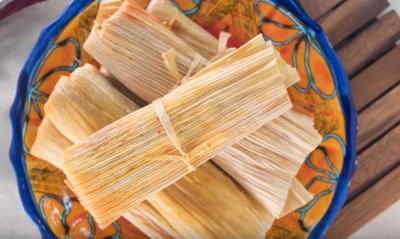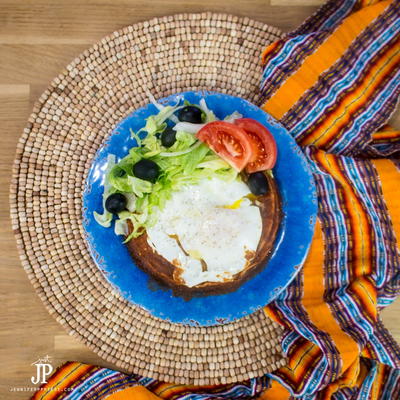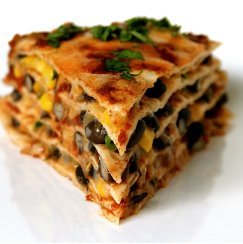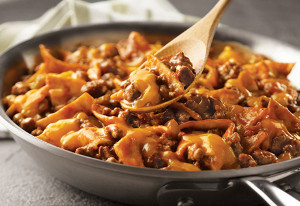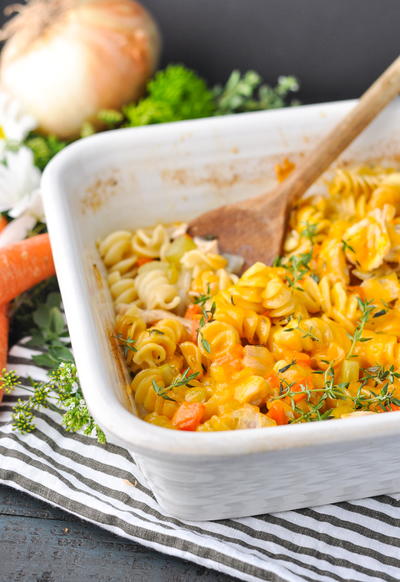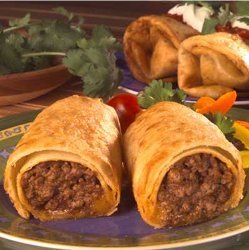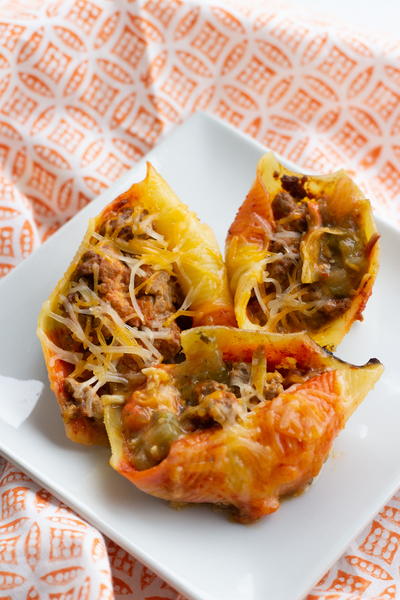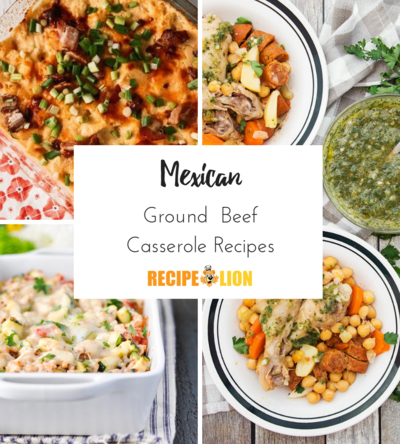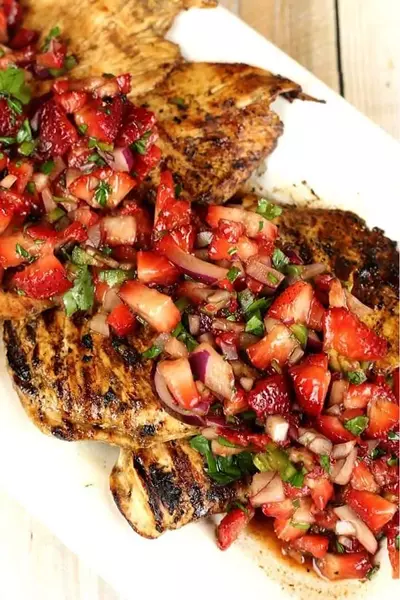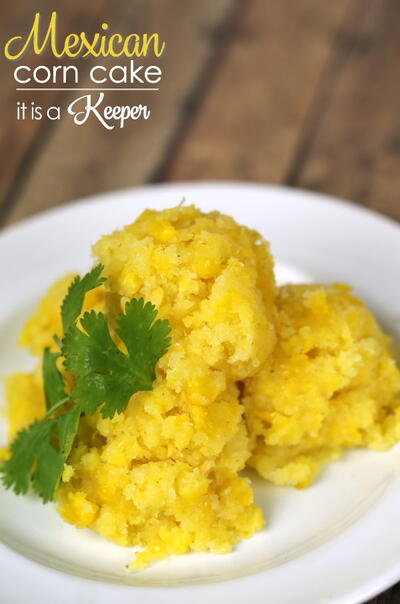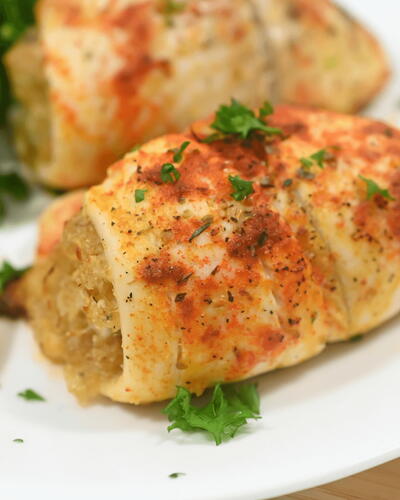Menudo Blanco Sonorense
Ingredients
- 1 small (about 2 pounds) beef or calf's foot, split horizontally and
- cut into 6 pieces
- 1 small head of garlic, unpeeled and cut in half horizontally
- 1 medium white onion, roughly sliced
- 1 scant tablespoon sea salt
- 2 pounds tripe
- 3/4 pound (4 1/2 to 5 cups) dried hominy, cooked and flowered plus cooking water
- crumbled chile piquin
- finely chopped white onion
- roughly chopped cilantro
- lime quarters
Instructions
Serves 8 to 10. Put the calf's foot pieces, garlic, onion, and half the salt in a large pan. Put the tripe on top with the remaining salt, cover the pan, and cook over very low heat so that it simmers for about 3 hours. Strain the meat, reserving the broth, and cut the tripe into small squares--about 1 1/2 inches. Remove the bones from the calf's foot and chop the flesh roughly. Return the meats to the pan with the broth, the flowered hominy, and the hominy cooking water. Taste for salt and continue cooking over very low heat for 1 hour. Serve in deep bowls with flour tortillas, passing around the topping for each to serve al gusto. PREPARING HOMINY The cooking and "flowering" of the corn is not complicated, but it's a little time-consuming until you are practiced in it. You can prepare a large batch up until the final cooking and freeze what you don't use. While the corn is usually cooked with nothing but water, there are some exceptions, where salt, onion, and garlic are added. Eight ounces of dried whole hominy, or large white corn kernels, measures about 1 1/2 cups and when cooked will yield between 3 1/2 and 4 cups, depending on quality. 1/2 pound whole dried hominy, with pedicel (con cabeza) 1 1/2 rounded teaspoons powdered lime (see below) Put the whole hominy into an enamel or stainless-steel pot and add enough cold water to come about 2 inches above the surface of the corn. Set over medium heat. Dilute the powdered lime with about 1/2 cup cold water and add to the pot through a fine strainer, pressing out the lumps with a wooden spoon. The water will become slightly milky. Cook the corn until it comes to a simmer (the skins of the kernels will now be bright yellow) and continue cooking, covered, until the skin can easily be slipped off the kernels-- about 20 minutes. Remove from the heat and set aside to cool off. When the corn is cool enough to handle, drain and put into cold water, rubbing the kernels through your hands until the skins have been cleaned off. Skim off the skins and discard; rinse the corn once more. With the tip of a paring knife or a strong thumbnail, remove the pedicels. When all the corn has been cleaned, add enough fresh water to come about 3 inches above the surface of the corn, cover, and bring to a fast simmer. Continue cooking until the corn is tender and has opened up like a cupped flower--about 1 1/2 to 2 hours, depending on how old the corn is. When cooked, always reserve the cooking water and add it with the corn to the soup. You may use a pressure cooker for this last step. Bring up to pressure, lower the heat, and cook slowly for about 30 minutes. LIME This chemically pure lime, calcium oxide, is used in the preparation of dried corn for making tortilla and tamale dough. It is generally sold in rocklike lumps of varying sizes. To use it in this state, break off a piece about as large as a golf ball (once you have some experience you can estimate more accurately) and crush it down as much as possible. Sprinkle well with cold water. It will then start to slake, or burn as the Mexicans say, and it does just that. It starts to crumble with a slight sizzling noise, sending off a vapor. If you put your hand over the bowl you are using, you can feel the heat emanating from it. When the action has subsided, it is now slaked; stir again and pour the milky liquid through a strainer into the pot with the corn and water. Take a taste of the water; it should have a slightly acrid taste or, as the Mexican expression goes, "grab your tongue." If the water is very strong and bitter, add more cold water to dilute the corn water. If it is too weak, pour more water through the strainer containing the lime residue and try again. Since one usually buys lime by the pound at the very least, it can be broken up into smaller pieces and stored in closed jars, but with time it will naturally slake on its own with the natural moisture in the air. It is still usable, although it will have broken down to a powder containing some small lumps. When you add water to it for the nixtamal, it will not burn. Note: When handling lime, be careful not to get any near your eyes and always use a non-corrodible container for diluting it.
Read NextEasy Beef Chimichangas

